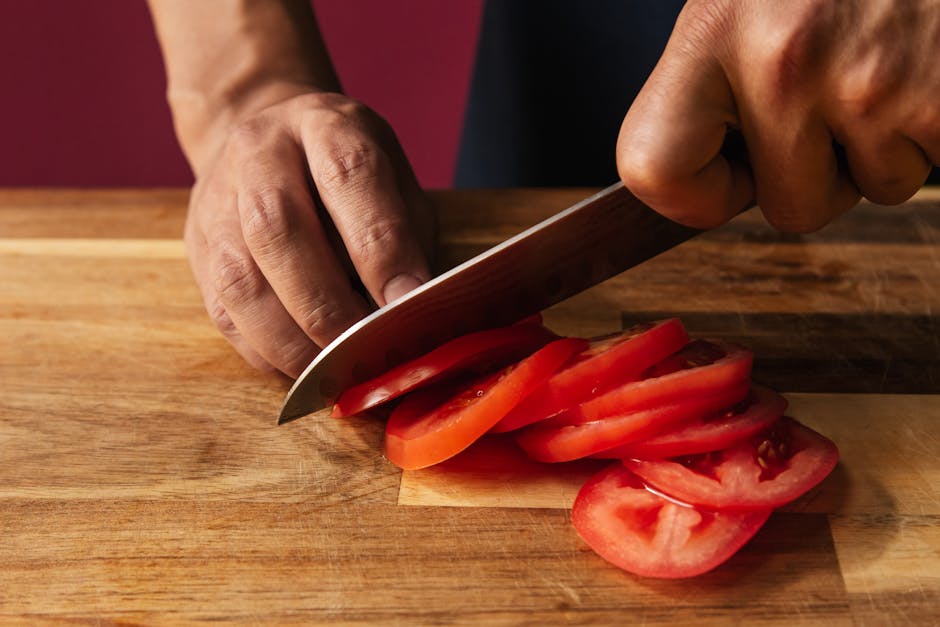Right, pull up a chair, or don’t, I don’t much care. Just listen up for a minute. You’re always seeing some new superfood pop up, aren’t ya? One minute it’s kale, then it’s chia seeds, then some berry nobody’d ever heard of that costs a king’s ransom. Makes a bloke wonder what fresh hell the marketing wizards are cookin’ up next. And frankly, most of it’s bollocks, just an excuse to charge you ten quid for a handful of dirt. But every now and then, something comes along that actually, genuinely, has a bit of grunt to it. Something real. And for me, that something is the humble fiddlehead.
Now, if you’re down there in Texas, you might not even know what I’m on about. Or if you’re a city slicker in Sydney, probably think I’m talking about a musical instrument. Nah, mate. Fiddleheads. We’re talking about those tightly coiled, almost ornamental-looking shoots that pop up in the spring, lookin’ a bit like the scroll of a fiddle, hence the name, obviously. They’re the young fronds of certain ferns, mainly the Ostrich fern, if you’re being particular, and folks have been munching on ’em for generations. Especially up North, over in places like Northumberland or parts of Canada. Proper seasonal grub. My old man, God rest his soul, used to swear by ’em. Said they cleared out the pipes better than a plumber on overtime.
The Spring Foraging Ritual: Not for the Faint of Heart, But Worth It
See, this ain’t some fancy, lab-grown, hydroponic nonsense. This is out in the wild. You gotta know where to look, when to look, and what you’re looking at, because some ferns? They’ll make you sicker than a dog on a rough Channel crossing. My cousin, bless his cotton socks, once came home from a foraging trip in the Welsh valleys looking pale as a ghost, convinced he’d eaten something that was giving him superpowers. Turned out it was just a bad dose of the runs from the wrong sort of green stuff. So yeah, do your homework, or go with someone who knows their onions. This isn’t a pick-and-eat situation you just jump into on a whim.
But when you get the right ones, fresh, vibrant green, straight from the damp earth? There’s a satisfaction there you just don’t get from a plastic-wrapped tray from the supermarket. It’s primal, that feeling. A connection to the land, I suppose. And it’s this wild, unadulterated nature that, I believe, contributes to their punch. You can’t replicate that sort of natural richness in a factory. Not really, can you? It’s why proper, honest produce always tastes better.
Now, I hear some folk ask, “Are fiddleheads good for you, then, or is it just old wives’ tales?” And fair enough, it’s a valid question. After all, everyone’s hawking some ‘superfood’ these days. But with these little green curlicues, the answer’s a pretty emphatic yes. They’re not just some quaint forest snack; they actually pack a wallop.
More Than Just Green: What These Little Coils Are Packing
So, what exactly are we talking about when we say “health benefits”? Are we talking about some magic cure-all? Nah, don’t be daft. Nothing’s a magic cure-all, except maybe a good kip and a proper laugh, but they are undeniably good for your general well-being. Think of it like this: if your body’s a classic car, fiddleheads are a damn good oil change and some premium fuel.
First off, vitamins. They’ve got a surprising amount of Vitamin A, which is supposed to be good for your eyesight, right? So maybe less squinting at those tiny headlines I keep having to print. They’re also decent on Vitamin C, which everyone bangs on about for your immune system. And then you’ve got your B vitamins – Niacin, Riboflavin, Thiamine. Stuff that helps keep your metabolism ticking over, stops you feeling like you’re running on empty all the time. Proper energy boosters, without the jitters you get from too much coffee. My mate Dave, up in Glasgow, always used to scoff ’em come spring. Said it kept him from feeling “pure dead knackered” after a shift. Probably not wrong.
Then there are the minerals. You’d think a little green shoot wouldn’t have much going on, but they’re surprisingly mineral-rich. Iron, for one. If you’re feeling a bit sluggish, a bit drained, that could be down to low iron. Fiddleheads can help give you a bump. And manganese, copper, phosphorus, potassium. All those bits and bobs your body needs to actually function properly. Not exactly glamorous, these minerals, but without ’em, you’re not going to be running on all cylinders, are ya? It’s like trying to run a newspaper with half the sub-editors missing; it just ain’t happening.
The Hidden Power of the Green Stuff: Antioxidants and Fiber
Now, here’s where it gets a bit more modern, a bit more science-y. Antioxidants. Everyone’s talking about ’em these days. And fiddleheads have got ’em in spades. Polyphenols, carotenoids. All these fancy words basically mean they’re good at fighting off the rubbish that builds up in your body, the stuff that makes you feel older than you are, that makes you feel a bit rusty. Think of ’em as tiny little scrubbers, going in there and tidying things up at a cellular level. And given the amount of crap we expose ourselves to every day, anything that helps clean house is a winner in my book. It’s like having a good cleaning crew come in after a particularly messy news day.
“Do fiddleheads help with digestion?” someone usually pipes up, probably after a particularly heavy curry the night before. And the short answer? Aye, they do. They’re packed with fiber. Not the scratchy, unpleasant sort, but the good, wholesome kind. Fiber, as anyone with half a brain knows, is crucial for keeping your gut happy. Keeps things moving, keeps you regular, prevents that bloated, sluggish feeling. And let’s be honest, a happy gut often means a happier you. There’s nothing worse than feeling bunged up, is there? Makes you proper grumpy. So if you want to avoid feeling like a constipated badger, get some fiber in ya.
More Unexpected Goodies: Omega-3s and Other Surprises
What’s really interesting, and something that genuinely surprised me when I first heard it, is that these little green buggers actually contain Omega-3 and Omega-6 fatty acids. Now, you usually think of fish or certain nuts for those, don’t you? Not some fern shoot from a damp forest floor. But there they are. These are the “good fats,” the ones that are supposed to be good for your brain, good for your heart, all that jazz. It’s rare to find these in vegetables, especially in any significant amount, so that’s a real bonus. It’s like finding a decent pub with real ale that also does cracking grub. A pleasant surprise, innit?
Then there’s the low-calorie aspect. If you’re watching your waistline, or just trying to eat a bit healthier without feeling like you’re constantly starving, fiddleheads are a proper job. They fill you up with good stuff without piling on the calories. It’s a win-win, really. You get all the vitamins and minerals, all the fiber, and you don’t feel like you need to run a marathon just to burn it off. My old neighbour from Dudley, a chap who was always on some diet or another, used to say they were “bostin’ for the figure.” He was always on about his “figure” and how he couldn’t afford to be “a fat wazzock.” Bless him.
“Are there any specific benefits for inflammation?” someone asked me the other day, always with the specific questions, like I’m some sort of walking medical textbook. Look, from what I gather, and from what the eggheads seem to be saying, the antioxidants and certain compounds in fiddleheads might have anti-inflammatory properties. Which, if true, is a pretty big deal. Inflammation is behind a lot of modern woes, isn’t it? Aches, pains, general feeling of being worn out. Anything that can naturally help with that is worth a look, I reckon. I’m not saying it’s going to cure your dodgy knee from that time you tried to play football at 50, but it certainly won’t hurt, will it?
How to Get ‘Em in Your Gob: cooking and Caution
Now, before you go charging into the woods like a wild animal, let’s talk about getting them from the ground to your plate. You absolutely, categorically, must cook fiddleheads. And cook them properly. Don’t just nibble on ’em raw like some sort of rabbit. They contain a natural toxin, thiaminase, that cooking neutralizes. So, boil them first, for at least ten to fifteen minutes, then drain that water right off and maybe even give ’em another quick boil in fresh water. After that, you can sauté ’em with a bit of garlic and butter, add ’em to an omelette, or throw ’em in a stir-fry. My mate in Norfolk, a proper country boy, just boils ’em, chucks a load of butter on, and a sprinkle of salt. Calls it “proper muck.” Simple, but effective.
“What about foraging ethics?” Fair question, especially when everyone’s suddenly a nature enthusiast. Don’t just pillage the place, obviously. Take a few from each patch, leave plenty behind so the fern can grow back next year. Be respectful. It’s not a free-for-all. Think of it like a newspaper stand; you take one paper, not the whole stack.
The Cynic’s View on Seasonal Goodness and the Health Hustle
It always strikes me as ironic, this whole “superfood” circus. Folks spend fortunes on obscure berries flown in from the other side of the world, pumped full of carbon miles, when sometimes the best stuff, the most potent stuff, is right under our noses. Or at least, right there in the local woods, if you know where to look and aren’t afraid of a bit of mud. Fiddleheads aren’t glamorous, they don’t have celebrity endorsements, and they certainly don’t come in a fancy smoothie kit. They’re just honest, seasonal tucker. And sometimes, that’s exactly what you need.
In my experience, the more processed something is, the more marketing guff there is around it, the less likely it is to be genuinely good for you. It’s all about the margins, the profit. But a fiddlehead? It’s just a fiddlehead. It grows, it’s picked, it’s cooked, and it’s eaten. No complicated supply chains, no ridiculous health claims plastered all over the packaging. Just simple, unadulterated goodness. That’s probably why it won’t ever be the next kale. Too much common sense, not enough opportunity for corporate chancers to slap a fancy label on it and charge you over the odds.
So, What’s the Real Takeaway Here?
Look, I’m not saying you need to go live off the land and become some kind of survivalist, unless that’s your bag. But it’s worth remembering that nature, in all its messy, unpredictable glory, still provides some of the best remedies and sustenance going. Fiddleheads are a prime example. They’re a seasonal shot in the arm, packed with vitamins, minerals, fiber, and those good fats, all wrapped up in a quirky little coil. And they taste pretty decent too, especially when they’re done right, with a bit of butter and maybe a dash of vinegar, just like my grandmother from Worcestershire used to do ’em. She called ’em “spring greens,” and that’s exactly what they are.
Don’t expect miracles, because life, as I’ve learned over twenty-odd years in this racket, rarely delivers ’em. But do expect a solid contribution to your general well-being. Expect to feel a bit more spry, a bit less creaky. Expect to eat something genuinely healthy that doesn’t cost you an arm and a leg, if you’re willing to put in a little effort. And honestly, that’s more than you can say for most of the health fads doing the rounds these days. It’s just good, honest food. A bit of a hidden gem, if you ask me. And in this cynical old world, a gem, no matter how small, is always worth digging for.












